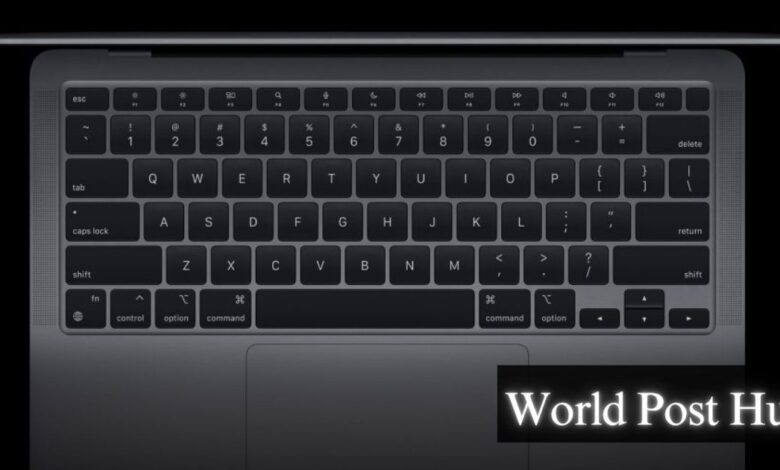A Guide to Apple Laptop Key Replacement: Tips and Tricks

Apple laptops are renowned for their sleek design and advanced features, but even the most meticulously crafted keyboards can face wear and tear over time. This comprehensive guide explores various options available for replacing Apple laptop keys, ranging from do-it-yourself (DIY) methods to professional services. We’ll provide valuable tips and tricks to assist you in selecting the right replacement keys and ensuring a smooth installation process.
Understanding the Need for Key Replacement:
Before delving into replacement options, it’s crucial to understand why Apple laptop keys might require replacement. Common reasons include:
Physical Damage:
- Accidents, spills, or drops can result in physical damage to individual keys, necessitating replacement to restore normal functionality.
Wear and Tear:
- Constant pressing of keys over time can lead to wear and tear, particularly for frequently used keys like the spacebar or those in the center of the keyboard.
Key Sticking or Unresponsiveness:
- Accumulation of dust and debris beneath the keys can cause them to stick or become unresponsive. While cleaning may help, replacement might be necessary if the issue persists.
DIY Methods for Apple Laptop Key Replacement:
Key Removal and Cleaning:
- Before opting for replacement, attempt to remove the problematic key and clean underneath using a can of compressed air. This may resolve issues with sticking or unresponsive keys.
Replacement Key Kits:
- Several companies offer DIY replacement key kits containing the necessary tools and keys for the replacement process. These kits cater to users comfortable handling replacements themselves.
Using a Spare Key from a Similar Model:
- If available, a spare key from a similar Apple laptop model may serve as a replacement. Ensure that the key size and mechanism match those of your laptop.
Professional Apple Laptop Key Replacement Services:
Apple Authorized Service Providers:
- Apple’s network of authorized service providers offers genuine replacement parts and skilled technicians, ensuring quality and authenticity.
Apple Store Genius Bar:
- For those near an Apple Store, scheduling an appointment at the Genius Bar allows in-house technicians to assess the issue and provide professional key replacement services using authentic Apple components.
Third-Party Repair Services:
- Several third-party repair services specialize in Apple laptop repairs, including key replacements. Ensure the service provider is reputable, uses genuine Apple parts, and offers a warranty on their work.
Tips for Choosing the Right Replacement Keys:
Check Model Compatibility:
- Ensure replacement keys are compatible with your specific Apple laptop model to guarantee a proper fit.
Consider Key Layout and Size:

- Pay attention to the layout and size of keys, especially variations in function keys or keys with specific functions. Choose replacement keys that match the original layout.
Backlit vs. Non-Backlit Keys:
- If your Apple laptop features a backlit keyboard, choose replacement keys compatible with the backlighting system.
Opt for Genuine Apple Parts:
- Prioritize genuine Apple parts for professional services or replacement key purchases to maintain compatibility and laptop integrity.
Read User Reviews and Testimonials:
- When considering third-party options, read user reviews and testimonials to choose a reliable and trustworthy provider.
DIY Apple Laptop Key Replacement: A Step-by-Step Guide:
For those confident in their technical skills, here is a step-by-step guide for replacing Apple laptop keys:
Gather the Necessary Tools:
- Collect a flathead screwdriver, a spudger or plastic pry tool, and the replacement key.
Turn Off the Laptop:
- Ensure your laptop is powered off before starting the replacement process.
Remove the Damaged Key:
- Carefully use the flathead screwdriver or plastic pry tool to lift the damaged key until it pops off.
Clean the Key Slot:
- Clean the key slot on the keyboard to ensure the replacement key sits flush and functions correctly.
Attach the Replacement Key:
- Align the replacement key with the key slot, ensuring hinges match attachment points. Apply even pressure to snap the key into place.
Test the Replacement Key:
- Turn on your laptop and test the replacement key to ensure it registers keystrokes correctly. Double-check alignment and attachment if issues arise.
Repeat if Necessary:
- For multiple key replacements, repeat the process for each key, ensuring correct alignment and attachment.
Conclusion:
Replacing Apple laptop keys can be a straightforward process with the right knowledge and tools. Whether opting for a DIY approach or professional services, understanding options and considering key compatibility factors is crucial. By following the tips and tricks outlined in this guide, you can make an informed decision, choose the right replacement keys, and ensure a smooth installation process, whether you prefer a tech-savvy DIY approach or the expertise of professionals in restoring your Apple laptop’s functionality.





